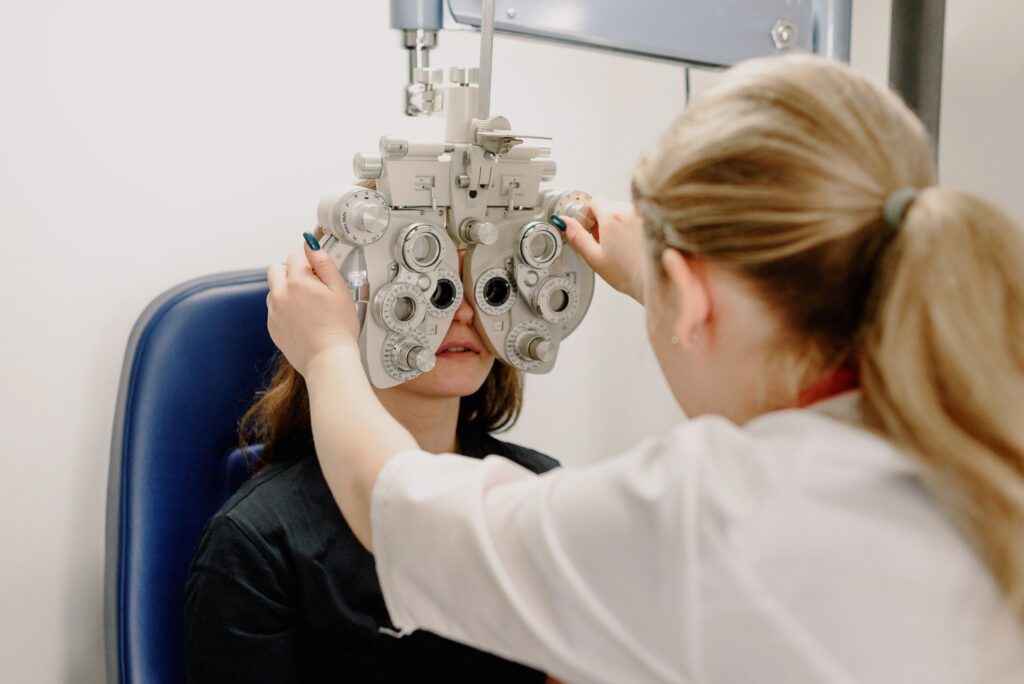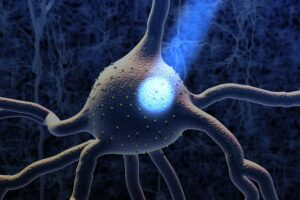
1st Human Test of Optogenetics Restores Sight to the Blind
Gene editing is used in optogenetic therapy to add light-sensing molecules to cells. Light can then be used to switch on and off these cells. This method has been used in studies for a long time to understand better how nerve cells function.
Neuroscientists may now accurately control neuronal communication in the brain and other places by altering nerve cells to fire electrical signals when exposed to specific wavelengths of light. Wong points out that the procedure has only been employed on one patient, even though it has immense therapeutic potential.
It’s a component of a clinical experiment still being conducted to evaluate the safety and tolerability of gene therapy. With more testing and improvement, the method might aid blind individuals in performing daily tasks more successfully.
What Is Optogenetics?
Optogenetics is a technique that combines specialized optical systems and genetic engineering technologies to regulate and monitor the functioning of cells, tissues, and organisms. Due to its widespread application in researching the brain’s neural circuitry, it is currently regarded as a subfield of biotechnology.
It was possible to understand the brain with an evolutionary perspective like optogenetics. Using a protein called opsin enables researchers to precisely and highly resolvedly turn on and off a particular cell or cellular region.
As a result, they could control certain animal behaviors (such as pain and fear) and shed light on the role that particular cells played in regulating those behaviors.
 In 1979, Francis Crick first introduced optogenetics, which is the use of light to exert space-time-dependent control over specific neurons quickly. However, the lack of cutting-edge instruments and techniques prevented the idea from being implemented in neuroscience.
In 1979, Francis Crick first introduced optogenetics, which is the use of light to exert space-time-dependent control over specific neurons quickly. However, the lack of cutting-edge instruments and techniques prevented the idea from being implemented in neuroscience.
To shed light on various issues about movement, blood pressure, hunger, body metabolism, learning, and sensory processing, optogenetics has broad applications in neurology, animal behavior, and physiology.
How Does Optogenetics Work?
The Chlamydomonas reinhardtii green alga is the starting point for explaining how optogenetics functions. The energy required for this tiny organism to survive is produced by photosynthesis. It has an eyespot to make this process as quick as feasible. An inconspicuous single-celled alga can shift into a better position by learning the direction of light from this light-sensitive portion of the cell. To activate the eyespot, C. Reinhardtii conducts ions across a membrane.
These channels change form and open when the proper wavelength of light strikes them, allowing ions to pass through the membrane. Channelrhodopsin-2 is the most widely utilized ion channel for stimulation in optogenetics. Similar processes stimulate neurons. The neuron fires when a threshold is met, which happens when a predetermined quantity of positive ions has passed through the cell membrane.
The light-activated ion channels were expressed on brain neurons by genetics. These ion channels open when light strikes them, allowing ions to enter the cells and set them on fire.
It took a virus that had been genetically altered to express ion channels in the brain. All the cell dynamics and equipment required to represent the ion channel gene are present after recombination. The media will start to appear on the cell membrane. The expression of somewhat distinct gene sets by various types of brain cells is how they differ.
The promoter region of the majority of genes determines whether the gene is expressed in the cell and whether it is active. By including a promoter unique to a given cell type in your transgenic virus, you may ensure that the light-sensitive ion channels are expressed only in the target cells.
Who Is Optogenetic Therapy For?
Optogenetic therapy is mainly being studied for retinitis pigmentosa patients who have advanced retinal degeneration and have lost most of their photoreceptors. This therapy is not currently being evaluated for patients with a significant quantity of vision and a large number of healthy photoreceptor cells. 1st Human Test of Optogenetics Restores Sight to the Blind.
Patients with many forms of retinal degeneration, including other inherited retinal illnesses such as choroideremia, Stargardt disease, and rod-cone dystrophies, may benefit from optogenetic therapies. It is also helpful for those who suffer from age-related macular degeneration.
Optogenetic Techniques
A microbial opsin and an optogenetic actuator are integrated into organisms in particular locations using three strategies.
● 1st Approach
Introduce a viral vector genetically modified to contain opsin and an appropriate promoter in the chosen cell or organisms. The method has some drawbacks, one of which is that it is less sensitive.
● 2nd Approach
In transgenic mice, a mouse zygote introduces the optogenetic actuator with an appropriate promoter, such as Thy1. The optogenetic actuator’s early introduction of a more extended genetic segment is made possible. Compared to the first method, this one offers more specificity when integrating materials into cells.
● 3rd Approach
It is the most advanced and effective optogenetic method. Here, Cre recombinase transgenic mice are produced. The enzyme Cre recombinase facilitates recombination between two lox-P sites. The optogenetic actuator is then put into the genetically modified vector between the lox-P site, and only cells with the Cre recombinase enzyme can express the opsin proteins.
Optogenetic Therapy Clinical Trials
Optogenetic clinical trials’ preliminary findings indicate some vision benefits. By injecting genetically modified viruses into a 58-year-old man’s eye, scientists were able to cure him of the inherited eye condition retinitis pigmentosa.
After seven months, the man who had been blind for years could see small items with the help of customized goggles, such as a staple box, a tumbler, or a notebook. The development represents a critical step towards optogenetics becoming more widely used in clinical settings.
Optogenetics still needs to make vision improvements that enable reading or face recognition.
What Distinctions Exist Between Gene Replacement Therapy and Optogenetic Therapy?
Gene therapy is used in optogenetics to introduce opsins to retinal cells. However, there are important distinctions between this and other gene replacement therapy.
A defective gene that results in the death of photoreceptors is often replaced with a new, functional gene copy delivered to photoreceptor cells through gene therapy. A gene replacement therapy is called Luxturna. People with RPE65 gene mutations are specifically affected. Optogenetic medicines have the potential to repair vision due to a wide range of gene mutations because they are not gene-specific.
Additionally, while optogenetic therapies have the potential to help people with progressive retinal degeneration and little to no photoreceptors regain their vision, most gene replacement therapies function best when there are many photoreceptors still present.
Conclusion
Optogenetics is a technique that combines genetic engineering and optical technology to comprehend the precise neural mechanisms influencing an organism’s physiology and behavior, including instances of fear, fight, hunger, and illness states.
Utilizing a protein called opsin aids in mapping the neural circuitry and offers more profound insight into the function of a particular brain region or cell in regulating a specific behavior or set of disease conditions. Optogenetic technology is widely used in neuroscience, cardiology, physiology, and animal behavior research.
Its application is still evolving in many clinical settings, including cardiac and therapeutic disorders. As a result, current research focuses on improving optogenetic stimulation’s effectiveness in clinics.
The technology will be able to solve numerous mysteries about our brains as a result of the development of opsins with improved photosensitivity, adequate light-delivery devices, and more substantial model systems like a pig.
Do not be afraid to reach out to me, Mark E Wilkins, to assist you in any issues you might have. Most Hypnotherapy sessions last 2 hours and EFT Sessions are usually handled with one session.
To make an appointment, first listen to the Pre-talk and fill out he Complementary Healthcare Provider Disclosure. The use the Contact Form to request an appointment with the Bohol Hypnosis Expert.





